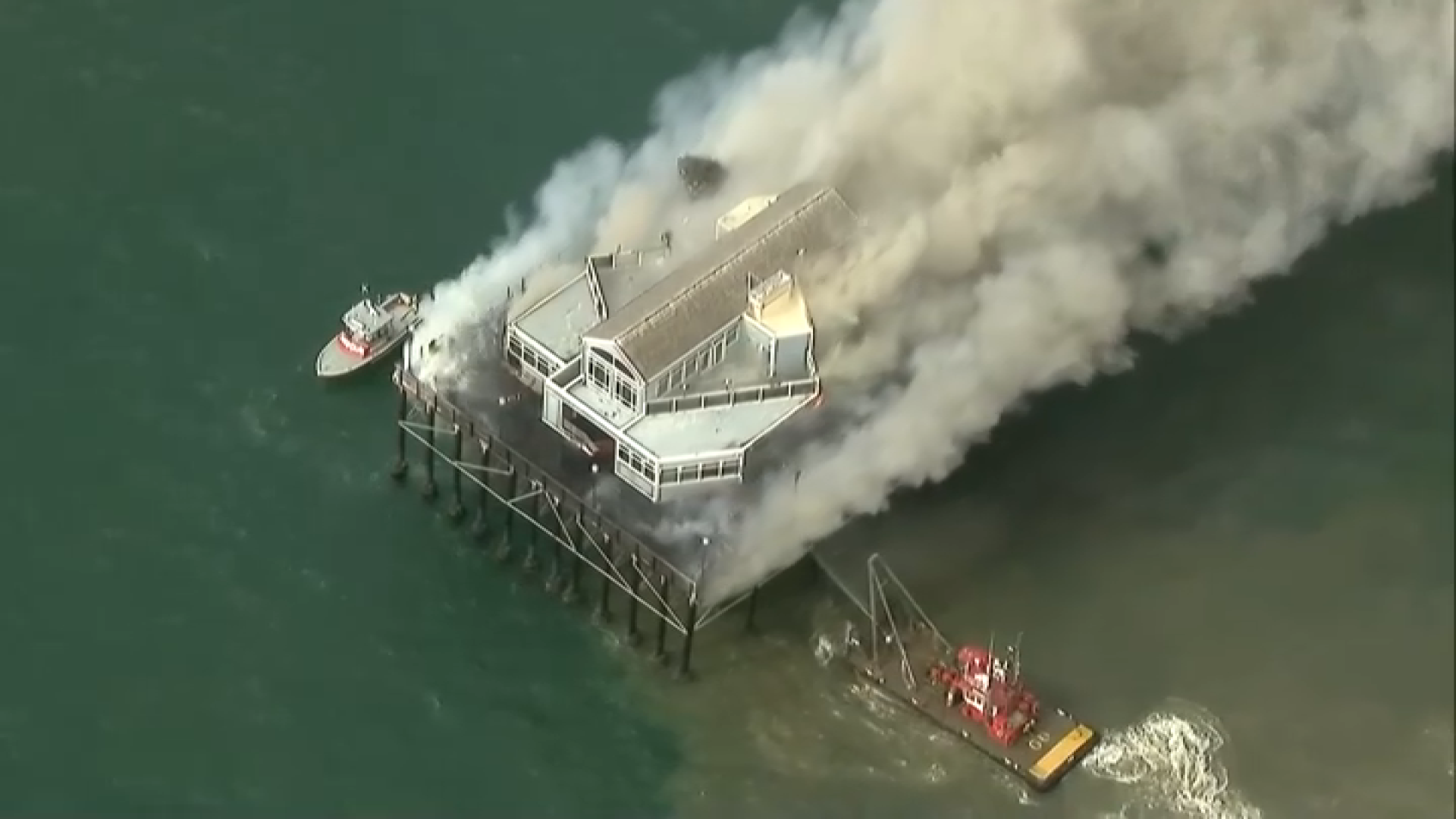Crew members who spent all night Thursday battling the Oceanside Pier fire spoke to NBC 7 about their experiences.
“The immense heat and flames, they made it an unstoppable fire for 12 hours,” Sgt. Mike Cranston with the San Diego Lifeguard said.
More Oceanside Pier fire coverage:
Cranston was among the crew members who spent Thursday night attacking the massive blaze from the water.
Get top local stories in San Diego delivered to you every morning. Sign up for NBC San Diego's News Headlines newsletter.
“We could tell that we were going to be in for a heck of a night, and we had a lot of work to do,” Cranston said.
He and two others were on board the Triton, the San Diego Fire-Rescue Department's new high-performance fire boat, designed to put fires out quicker.
“That vessel pumps. It’s got three monitors on it. The roof monitor pumps 2,500 gallons a minute. And then the two forward pumps on the bow, they pump 1,500 gallons a minute each, so it can put quite a bit of water on a fire in a short period of time,” Chief James Gartland with San Diego Fire said.
They still had to fight the elements.
“Driving this boat while you have to put a mask and oxygen on, and also the windows of the boat were getting fogged out from the inside, and then they were getting salt water from the outside, so the depth perception was a problem we were encountering," Cranston said. "Especially after a few hours of operating, your vision would get a little blurry. We would have to back out and take a break, and clear our eyes, and wipe the sweat out from under our masks just because we didn’t want to get into a position where we were bouncing off the pier or too far away from the fire that the water wasn’t reaching the mark."
Another concern they had was low visibility.
“We tried to make it as dark as possible, dimming all of the electronics in the cabin, turning all the lights off, really just using the glow of the fire as our main beacon to where we needed to be,” Cranston said.
Cranston said it wasn't until the set of dawn when the tide began to turn.
“Finally, around 5 am [Friday] morning, right as the sun was starting to peak, we could see that we were making some progress. We were finally seeing burned wood, not as many flames and more hot spots around,” he said.
Cranston said they battled the fire for about 20 hours, and, in the future, they plan on replacing some of the older vessels with more fire boats like the Triton.



